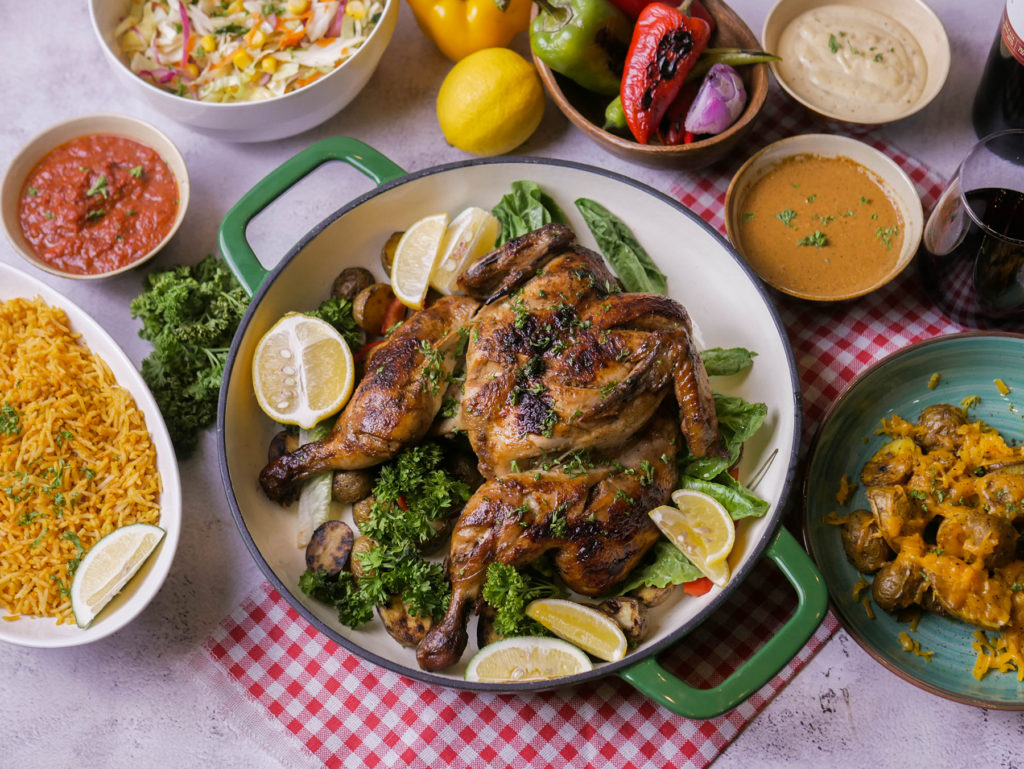
When it comes to chicken, fried chicken is undoubtedly a beloved dish around the world, but have you heard of peri peri chicken? What is peri peri chicken exactly? Let’s just say it’s more than a restaurant chain that serves delicious food in the Philippines!
This fiery, flavor-packed dish is a culinary sensation that’s been winning hearts and taste buds far beyond its African and Portuguese roots. So, let’s dive into the spicy, savory world of peri peri chicken – a dish that’s sure to add some zing to your cooking repertoire! You never know, it could even take the place of fried chicken as your new comfort food!
Peri peri chicken is…?
Peri peri chicken is a spicy chicken dish that is usually made by marinating chicken in a spicy sauce, then grilling or baking the marinated chicken until it is cooked through. It can be made using any cut of chicken, but it is traditionally made with whole chicken or bone-in chicken such as thighs, drumsticks, or leg quarters.
The sauce is called peri peri sauce, which is usually a blend of African bird’s eye chilis (also known as piri piri), garlic, paprika, and other seasonings. The sauce is what gives the chicken its name, as well as its spicy and flavorful taste. I guess this answers what is in peri peri chicken, agree?
Is peri peri chicken different from buffalo chicken?
You might be wondering if peri peri chicken is similar to buffalo chicken. After all, they’re both spicy chicken favorites. Well, that’s true, but there are some differences:
Origins:
- Peri peri chicken has its roots in Africa with a Portuguese influence.
- Buffalo chicken originated in the United States, gaining popularity in the 1960s.
Marinade:
- Peri peri chicken uses a spicy blend of African bird’s eye chili, garlic, paprika, and other seasonings.
- Buffalo chicken typically features a vinegary taste, often made with hot sauce.
Cooking Method:
- Peri peri chicken is usually cooked with whole or bone-in chicken pieces.
- Buffalo chicken is most often made with chicken wings.
If you want to try some buffalo chicken wings, check out Chef Max Nadin’s Just Wing It Class here at The Bailiwick Academy!
Is peri peri chicken African?
Did you catch the information earlier? African bird chili? If yes, then you might be wondering about the origins of this recipe—specifically its chicken marinade.
Well, the history of peri peri chicken dates back to interactions between native South Africans and Christian Portuguese traders. The main ingredient of the peri peri marinade, the bird’s eye chili pepper, was brought to Africa from Brazil by the Portuguese as early as the sixteenth century.
Therefore, the peri peri chicken we know today resulted from the melding of Portuguese and African culinary cultures over centuries. The dish has since spread across Africa and beyond, gaining worldwide popularity—which is why we’re talking about it today.
What makes peri peri chicken unique?
The soul of peri peri chicken lies in its sauce. The combination of bird’s eye chilis (or whatever chili you choose), garlic, herbs, and citrus creates a uniquely tangy and spicy flavor. Whether you grill, bake, or pan-fry, the key is to let the chicken marinate in this zesty sauce, allowing the flavors to deeply infuse.
Eat peri peri chicken with what…?
What does peri peri chicken go with? Well, this chicken dish pairs wonderfully with a variety of sides. Here are some great options to serve serve with peri peri:
- Rice: Plain white rice, coconut rice, lime rice, or even a flavorful pilaf can balance the spiciness of the chicken.
- Roasted or Grilled Vegetables: Think bell peppers, zucchini, asparagus, or corn for a healthy and colorful addition.
- Potatoes: Roasted, mashed, or in the form of fries or wedges, potatoes are a hearty side that goes well with the chicken.
- Salads: A fresh green salad, a tangy coleslaw, or a cucumber salad can offer a refreshing contrast to the heat.
- Bread: Flatbreads, garlic bread, or a crusty loaf can be great for soaking up the flavorful sauce.
- Dips and Sauces: Cooling dips like tzatziki or a simple yogurt sauce can help balance the spice.
- Beans: Black beans, kidney beans, or a bean salad can add a nice texture and flavor contrast.
- Corn on the Cob: Grilled or boiled, it’s a sweet and simple side.
- Fruit Salsas: Mango or pineapple salsa can add a sweet and tangy element to the meal.
- Pickles and Chutneys: They can add an extra zing and complement the spicy flavors of the chicken.
These sides not only add variety to your meal but also help in balancing the intense flavors of peri peri chicken, making for a well-rounded and satisfying dining experience.
Is peri peri chicken healthy?
Yes, this chicken dish is delicious, but is it good for you? Well, it can indeed be a healthy option, especially when prepared with mindful cooking methods. Here’s why:
- Chicken is a great source of lean protein, essential for muscle building and repair.
- The spices used in peri peri sauce, like garlic and chili, have anti-inflammatory and antioxidant properties.
- When grilled or baked, peri peri chicken is lower in fat compared to fried chicken dishes.
- The capsaicin in chili peppers can help boost metabolism, which is beneficial for weight management.
- It fits well into various dietary preferences, including low-carb and high-protein diets.
- If you want to make sure it’s healthy, you can make this dish at home so you can control the amount of salt and oil, making it healthier than restaurant versions.
However, the healthiness can vary based on how it’s prepared and served. As with any dish, moderation is key.
What’s a usual peri peri chicken recipe?
Curious about making some homemade peri peri? Here’s a simple recipe with ingredients to get you started:
Ingredients
- 4 chicken breasts (or thighs for more flavor)
- 3-4 African bird’s eye chilies, or whatever chilis you have, such as Thai red chilies. Adjust according to your heat preference,
- 3 cloves of garlic
- 1 teaspoon of paprika (smoked or sweet)
- 1/2 teaspoon of oregano
- 1/2 teaspoon of salt (adjust to taste)
- 1/4 teaspoon of black pepper
- Juice of 1 lemon for some zest
- 2 tablespoons of olive oil
- 1 tablespoon of red wine vinegar (optional for tanginess)
Instructions
Make the Peri Peri Sauce:
Blend the chilies, garlic, paprika, oregano, salt, pepper, lemon juice, olive oil, and red wine vinegar until smooth. This is your peri peri chicken sauce.
Marinate the Chicken:
Place the chicken in a bowl or resealable bag, then pour the peri peri sauce over the chicken, ensuring it’s well-coated. Marinate in the refrigerator for at least 30 minutes, though several hours or overnight is best for more flavor. Remember, the longer you marinate, the more intense the flavors.
Cook the Chicken:
Preheat your grill, broiler, or oven to a medium-high heat. Remove the chicken from the marinade, shaking off excess, then grill or broil the chicken for about 6-8 minutes per side, depending on thickness, until the chicken is cooked through and has a nice char.
Rest and Serve:
Let the chicken rest for a few minutes after cooking. Serve with your choice of sides, like rice, roasted vegetables, or a fresh salad.
Tips
- Adjust the number of chilies to suit your heat preference, ranging from mildly spicy to super spicy.
- If you can’t find African bird’s eye chilies, substitute with another hot chili or use chili flakes.
- For an authentic touch, add a bit of lemon zest to the marinade.
- Always ensure chicken is cooked to an internal temperature of 165°F (75°C) for safety.
Enjoy your homemade peri peri chicken with its bold flavors and spicy kick!
Want a surefire delicious, restaurant-quality peri-peri chicken recipe?
As a home chef, you’ll love the simplicity and versatility of this dish. You can grill the chicken for smokiness, bake it for convenience, or even pan-fry for a quick meal. And of course, there are so many online recipes for peri peri chicken!
The problem with online recipes is that you’re not sure if what you’ll get is really good—it might be good for the one who made it but not for everyone else. So what can you do to ensure that you really get a high-quality recipe?
Well, here’s your answer: sign up at The Bailiwick Academy and then enroll in Chef Max Nadin’s class, Peri-Peri Chicken!
Enroll In The Bailiwick Academy For Peri-Peri Chicken!
Chef Max’s course lets you dive into the juicy world of this special chicken dish, learning not just to make the chicken itself but also mastering three amazing sauces – Peri Peri, Chutney, and Harissa. Each one adds its own unique burst of flavor to the dish.
But wait, there’s more! A great main dish needs awesome sides, right? This class has you covered with lessons on making Roasted Baby Potatoes, Flavored Rice, and a refreshing Coleslaw Relish.
The best part? It’s designed for beginners and offered in both English and Filipino, making it super accessible.
So, if you’re looking to elevate your cooking game or add a star dish to your menu, this class is your ticket to a world of explosive flavors and rave reviews. Say goodbye to the hit-or-miss of random online recipes. Sign up at The Bailiwick Academy today—you never know, this might be the beginning of your own peri peri chicken franchise or food business!
—
Keep coming back to The Bailiwick Academy blog for more baking and cooking tips, kitchen tricks, and much more!
]]>Well, not to worry. Chicken is very versatile, meaning you can make a bunch of dishes with it. Check out these suggestions from The Bailiwick Academy!
How to prepare and cook a whole chicken: Chinese-style!
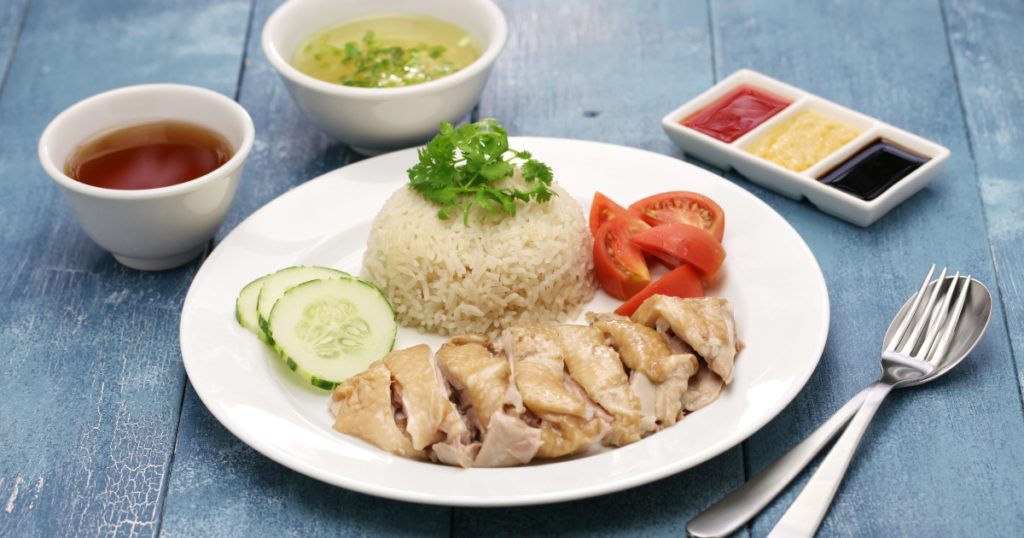
Pinoys love Chinese food because it has been part of our culture for over a hundred years. So if you’re going to add anything to your Christmas menu that’s chicken, why not refer to some Chinese recipes?
There are actually three you can look at: Soy Chicken, Hainanese Chicken, and their version of a roast chicken recipe. All three are sure crowd pleasers and will definitely satisfy hungry tummies.
Learn the recipes for those at our Authentic Chinese Roasting class!
Tinola
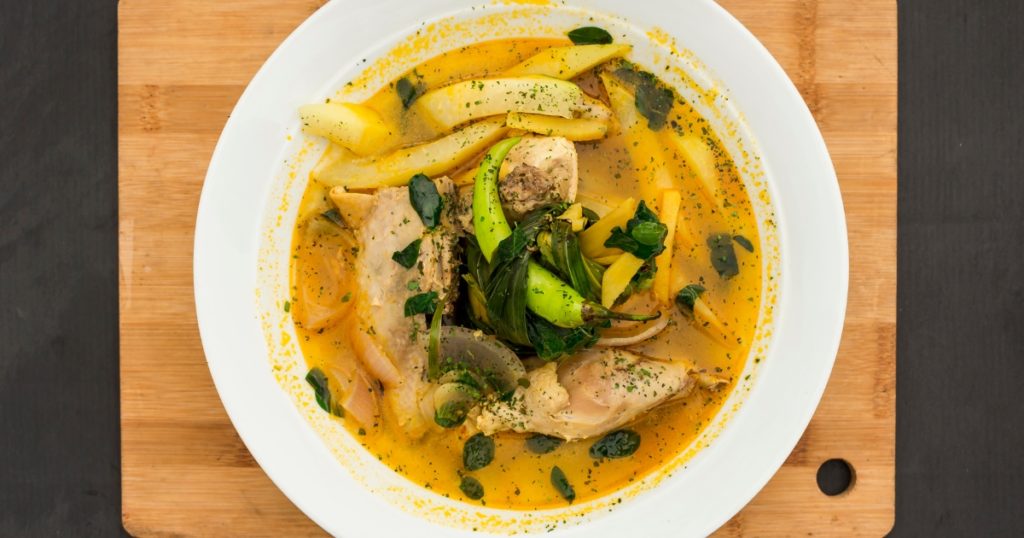
If you’re looking for a whole chicken to go with soup recipes, tinola is one you shouldn’t miss out on. It’s a popular chicken recipe here in the Philippines where the chicken is boil in broth with vegetables such as gabi and sayote, and flavored with ginger.
The soup is also flavorful and soothing and is perfect for the more chilly weather this December.
How do I cook a raw whole chicken? Just bake it!
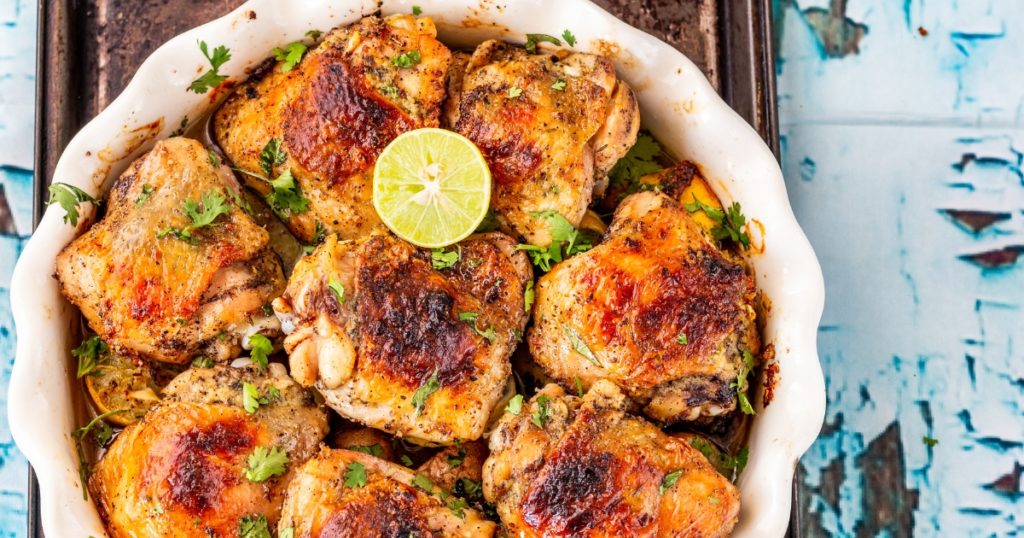
So contrary to popular belief, you don’t need a rotisserie machine to get started on baking chicken. How do you cook a whole chicken in the oven, exactly?
Well, there are actually plenty of recipes out there, but it’s not rocket science, to be honest. All you need is some salt and pepper, olive oil or butter, and your desired herbs and spices. Season the chicken, pop it into your oven and cook depending on your recipe of choice.
You’ll end up with some delicious baked whole chicken that everyone will be dying to get their hands on!
Adobo
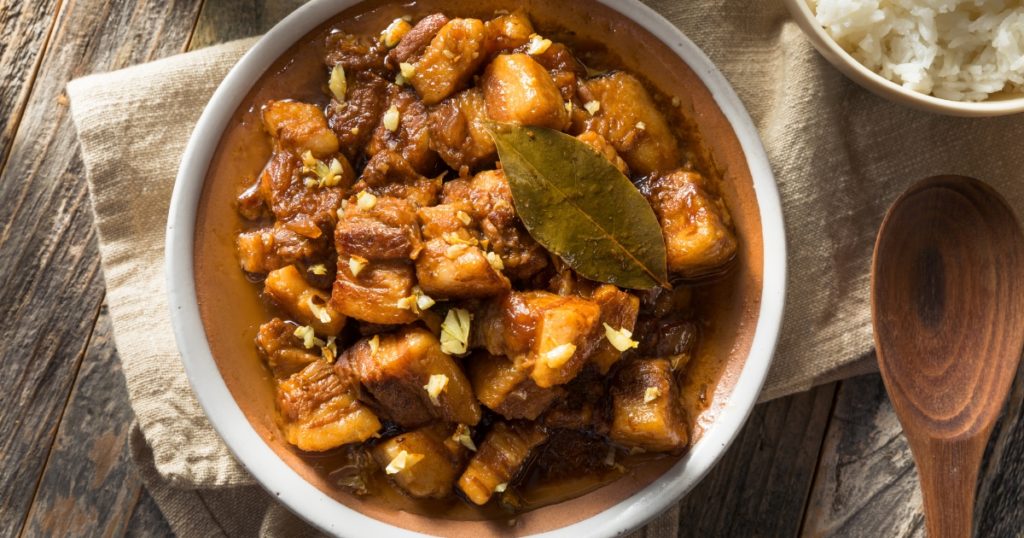
Here’s another basic thing you can do with your whole chicken: adobo! It’s a well-known Filipino chicken recipe that we’re sure all Filipinos know about. Even foreign celebrities love it!
And here’s the fun part: how you make it will vary depending on where you got your recipe from in the Philippines. Sure, it has soy sauce and garlic as the main ingredients, but you can make it mildly spicy or very spicy depending on your preference.
Personally, we’d prefer that added kick for more variety and festivity come noche buena!
Oh and if you don’t get to finish it during dinner, at least you can be sure it won’t spoil – that means plenty of leftovers!
Pininyahang Manok
If you were asked “How to make a good whole chicken?”, one of the last things that would enter your mind would be something that involved pineapples, right? But hey, let’s get real: we Filipinos love the combination of sweet and salty in our food!
And one dish that definitely highlights this is the pininyahang manok, or pineapple chicken as a rough translation. Aside from the obvious ingredients, this stew also has carrots, bell peppers, and sometimes potatoes. You’ll get a rich and savory broth when you add milk and fish sauce.
It’s definitely something special in our opinion!
How to prepare and cook a whole chicken: Chicken inasal!
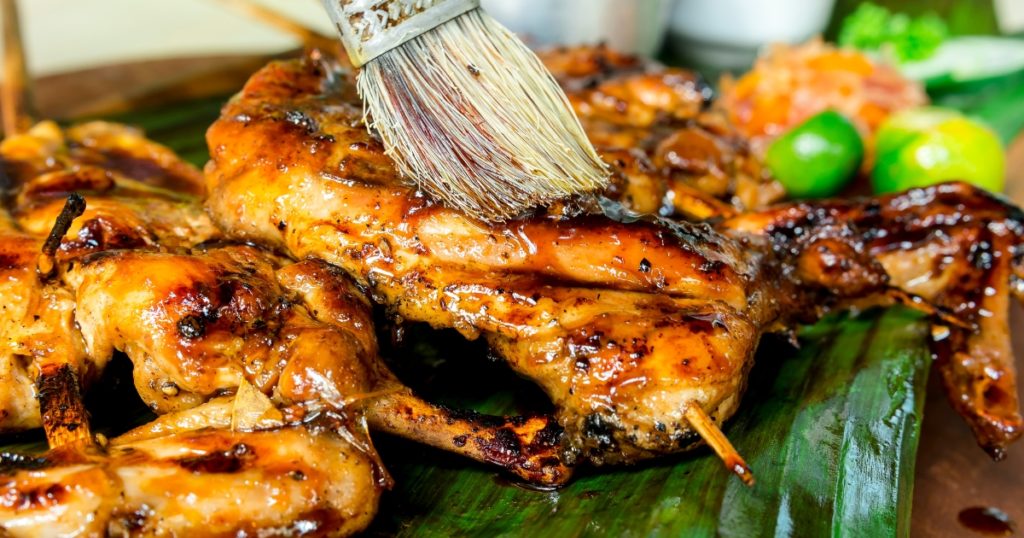
Chicken inasal simply means grilled chicken. Get your whole chicken, chop it up, marinate the parts with a mixture of calamansi, garlic, coconut vinegar, and annatto, and grill over hot coals. It’s actually a pretty common street food in the Philippines, and very popular too. After all, we have plenty of restaurants who serve this as their main offering!
But why bother going over to restaurants when you can just make your own at home, right? Plus, the grilling process outside lends to a more festive experience where your visitors can watch and salivate as you do your cooking. Think of barbecues in the United States, but with our local taste, right?
Arroz con Pollo
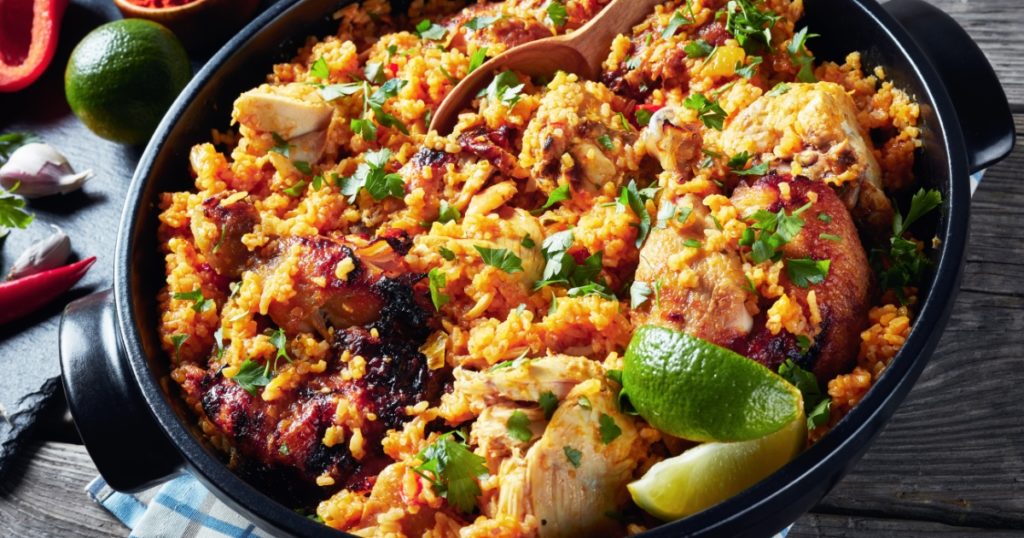
We’ve talked about Arroz con Pollo before in this blog, so isn’t it nice that we’re talking about this delicious chicken dish again? It’s basically rice with chicken and is a popular Latin-American dish. What’s not basic about it is that it has many variations depending on who makes it.
Just like we mentioned before, the basic ingredients of this dish, aside from rice and chicken, are saffron, dry white wine, bay leaf, onions, garlic, bell pepper, chicken stock, olive oil, salt, and pepper to taste.
Some recipes call for additional vegetables, herbs, spices, and even tomato sauce.
This cooked chicken is flavorful because it combines the juiciness of the chicken, the flavors of the herbs and spices, and the rice cooked in chicken stock and other mouth-watering ingredients. Yum!
And if you’re into this particular dish, check out Chef Joey Prats’ version here: Arroz con Pollo y Chorizo! With the addition of chorizo and other ingredients using Chef Joey’s personal recipe, it’s guaranteed to make you and everyone else scream for more!
Malaysian-Style Chicken Curry
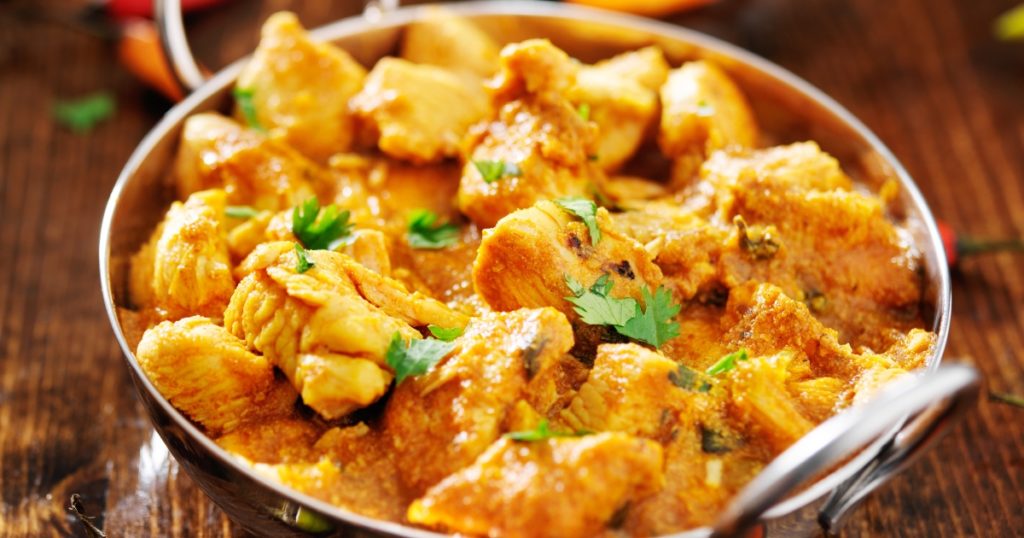
If you’re good with the idea of having Chinese food during Christmas, why not try one with a Southeast Asian flavor? Malaysian-style chicken curry is a tasty and aromatic dish with spices, coconut milk, and potatoes that compose a delicious sauce. Eat with rice or bread for full enjoyment!
Or even better? Eat it with nasi lemak, fragrant rice cooked in coconut milk and pandan leaves. No need to go to Malaysia for this too: just enroll in Chef Him Uy De Baron’s Hawker-Style Specials class!
How to prepare and cook a whole chicken: with ginisang sayote!
Just because it’s the holidays doesn’t mean we should give up on vegetables, right? Ginisang sayote with chicken is an easy-to-prepare dish that is made by cooking diced sayote and chicken and using tomatoes and oyster sauce for added flavoring. This flavorful and nutritious vegetable dish is great with rice, and will help keep you healthy during the holiday season.
Creamy mushroom chicken
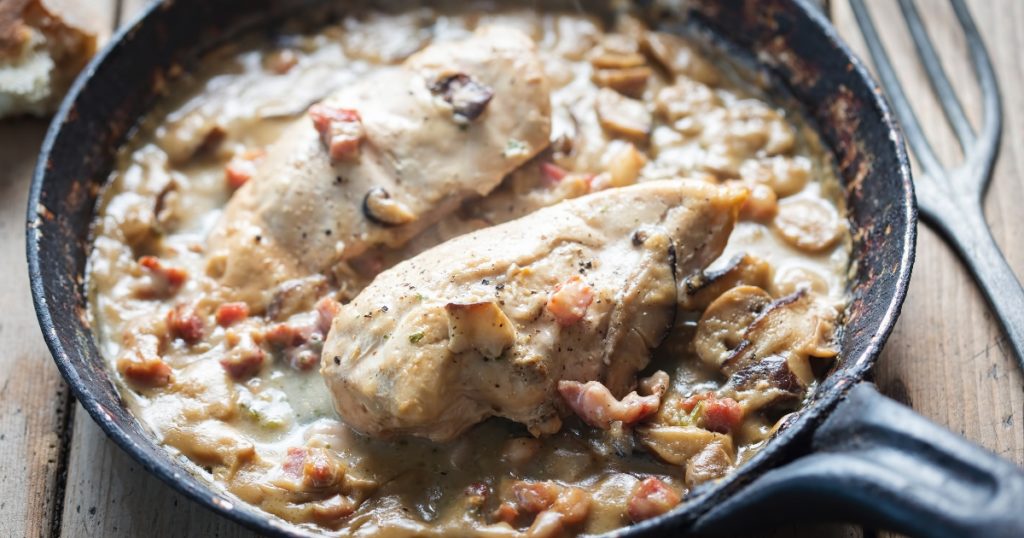
If you want to make a chicken dish that’s not only delicious but is sure to please everyone, make a creamy mushroom chicken dish. It’s composed of tender chunks of chicken, all-purpose cream, and tasty mushrooms. Add some garlic for extra depth and flavor and you get a true culinary masterpiece!
It’s great for serving with wine, too – which means it’s great for eating with a nightcap this Christmas season.
Speaking of how to prepare and cook a whole chicken…
There’s one more dish we forgot to mention on this list – and it’s probably one of the best things you can do with a whole chicken this holiday season!
Have you heard of chicken galantina?
It’s a chicken dish stuffed with many tasty fillings. It’s also been enjoyed by many generations of Pinoys for Christmas and other special occasions. And while it’s super delicious, it can be quite challenging to make.
Well, The Bailiwick Academy has your back with Chef Max Nadin and his latest class: Chicken Galantina!
Enroll in this class and the question “How do you cook a whole deboned chicken” will be answered! You’ll be guided not just in deboning and seasoning the chicken but also making the tasty filling, and roasting everything to perfection. You’ll also learn to make two delicious sauces, and bonus recipes and instructions for a summer salad, crunchy pickled vegetables, and a rice dish!
In short, you’ll get everything you need for a delicious and festive and iconic whole chicken dinner for Christmas! Plus, you can add this to your food business for 2023. After all, New Year IS coming up… as well as many other special occasions!
So what are you waiting for? Create a winner chicken dinner today! Sign up at The Bailiwick Academy!
—
Keep coming back to The Bailiwick Academy blog for more kitchen tips, tricks, and much more!
]]>So if you didn’t know that, and you’ve been eating eggs the same way all your life, we’re here to tell you to live a little. In fact, this article is for you. It’s going to take up not only how you can cook your eggs differently, but also how else you can use them for a delicious breakfast meal.
Let’s get to it, shall we?
The different ways of cooking eggs
Like we said, you don’t only have to cook your eggs in one way over and over again. Here are different methods for cooking them. Make sure to memorize these so you know what to answer the next time you’re at a breakfast buffet and the chef asks how do you like your eggs!
Scrambled eggs

One of the most basic ways to cook and enjoy an egg. Break open the desired number of eggs in a bowl, add some salt, then start beating them until the yolks and whites have completely combined. Put them in a pan and start cooking.
Some mix their eggs with butter and milk for more creaminess.
Sunny-side up eggs

Sunny side up eggs are another of the more well-known ways to prepare an egg. It’s a way of cooking where the egg whites are solid but the yellow yolk in the middle is still runny. That’s why it’s called sunny-side up: the round yolk looks like the sun.
Hard boiled

When you hard boil an egg, that means you’re cooking the egg without breaking the shell by putting them in water brought to a boil. The whole inside of the egg should be solid for you to consider an egg as hard boiled.
So how do you eat one after? Let it cool, break open the shell, and start peeling. Add salt for more flavor!
Soft boiled eggs

You often see soft boiled eggs placed in ramen, but you can also eat them by themselves. They also look like hard boiled eggs but there’s a difference!
Remember that you make hard boiled eggs by putting eggs in cold water that you boil. Soft boiled eggs, on the other hand, are placed in water that’s already boiling.
How do you know it’s a soft boiled egg? Look for an egg that has been cooked in its shell with whites that have a custard-like texture and yolks that are creamy, ranging from runny to jammy consistency.
Pressure-cooked
Have a pressure cooker? Then you basically have the shortcut for making soft boiled and hard boiled eggs. The result will depend on the minutes of cooking.
And if you have an air fryer, even better: you won’t need water at all
Poached eggs

Poached eggs, in our opinion, are beautiful. You have egg whites that are very firm to contain an oozy yolk in a nice, round shape. Then when you cut the circle open…
Oh, that burst of yellow. So beautiful!
Poached eggs have a reputation for being difficult to make, but you just need plenty of practice.
How do you poach an egg, exactly? Keep that question in mind – we’ll get to it later.
Over easy

Eggs over easy are simply sunny-side ups that you flip over. You’ll also get a runny yolk, which is great for dipping stuff into.
How to eat eggs for breakfast
Now that you know how to cook eggs in different ways, you should also know how to eat them in whatever way they’re cooked! Here are a few ideas.
As the main course

Whether you’re going to eat eggs with rice, or egg with bread, or just eggs ‘cause you’re on a keto diet, eggs are more than good enough to become the main course for breakfast. We’d recommend eating more than one, too. Contrary to popular belief, eggs aren’t really as bad for your cholesterol as we’d like to think.
Hey, the Mayo Clinic said it – who are we to argue, right?
As a side

This is the usual state of eggs: a supplement to whatever protein we crave in the morning. That’s not really a bad thing. It just means more protein, more tastes, and more to eat.
We really can’t find a way to complain about that.
As an omelet
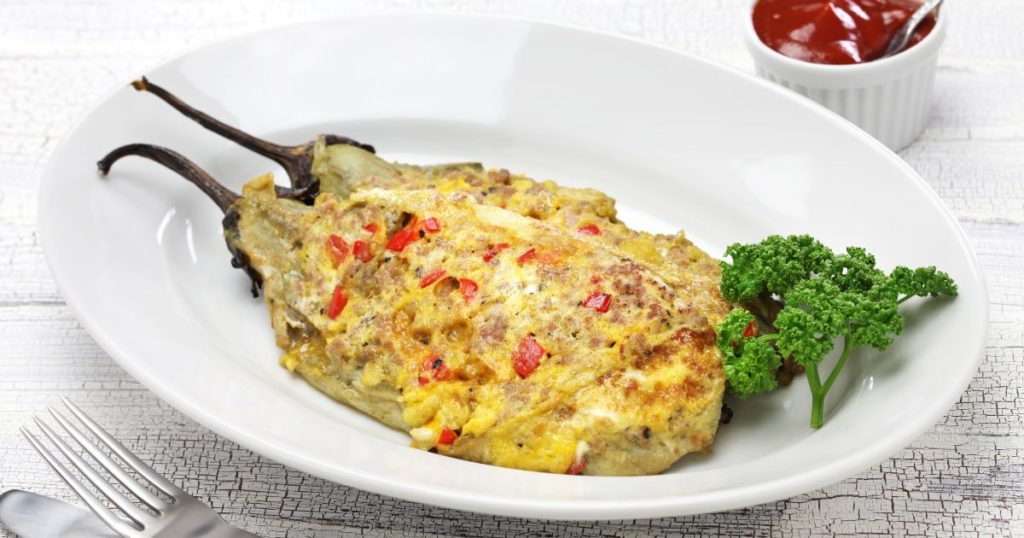
Think of an egg surrounding a filling like meat, mushrooms, other vegetables, and so on. That’s an omelet. The ingredients are incorporated into the egg.
One of the more popular ones here in the Philippines is the tortang talong. Yes, that’s an omelet!
Why not just eat the ingredient and the egg separately? Well, we’re guessing psychologically, it’s more filling since the egg gets thicker as it merges with the filling of your choice, but again, that’s just a guess.
In a sandwich

If you don’t want rice and eggs together, another option is to make a sandwich with either egg as the main ingredient or added with more proteins, like ham or a meat patty. As you can see with one of the fast food brands here, that combo is very popular.
Speaking of eggs and sandwiches…
We hope this article gives you more ideas on how to enjoy your eggs! And hopefully, it has revived your love for this simple but versatile breakfast protein.
And speaking of love for eggs, because we love eggs so much, we produced a class dedicated to eggs!
Or well, to one particular sandwich, at least.
Have you heard of Eggs Benedict?

It’s a traditional American breakfast or brunch item. It’s an open faced sandwich composed of 2 halves of an English muffin, bacon or ham, runny poached eggs (told you we’d get back to this!)…
AND… it’s topped with a delicious, rich, and silky Hollandaise sauce. Add a few herbs as well, and what you have is pure INDULGENCE.
If reading that makes you hungry, well, don’t worry: Chef Max Nadin is back with another class for you!
And if you guessed that it will show you how to make restaurant-quality Eggs Benedict, from poaching eggs, to making Hollandaise sauce and to putting everything together – you got it right!
The best part? Just like Chef Max’s Roasted Garlic class, this one is also FREE for all The Bailiwick Academy students!
Just go over to your Student Dashboard and look for FREE COURSES:

You’ll see this class:
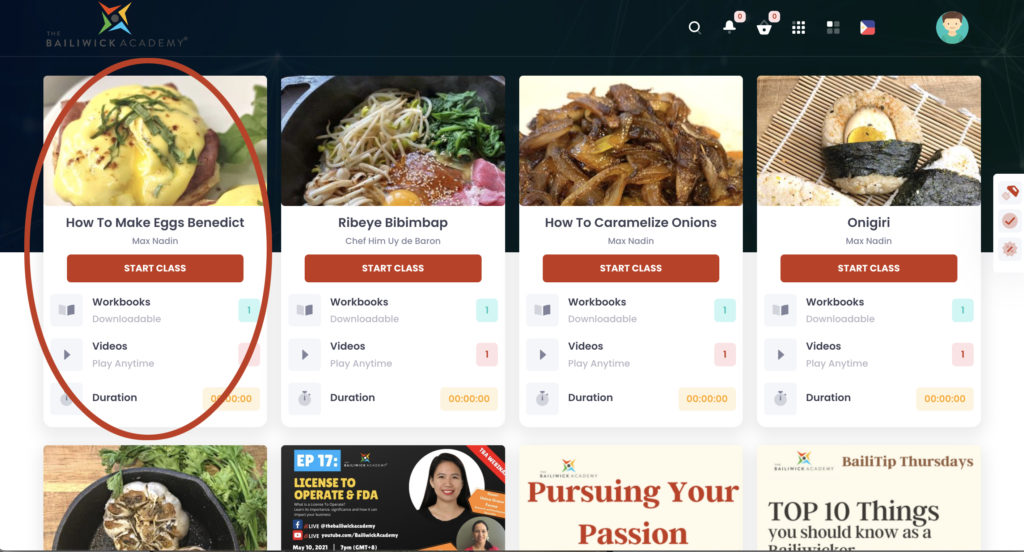
Just click on it and you’ll be ready to get started!

All you need to do to get access is to sign up at The Bailiwick Academy! It’s that simple.
So what are you waiting for? Sign up, go to your Student Dashboard, and start on one tasty eggs-perience!
—
Keep coming back to The Bailiwick Academy blog for more kitchen tips, tricks, and much more!
]]> (@jamesdimitri)
(@jamesdimitri)